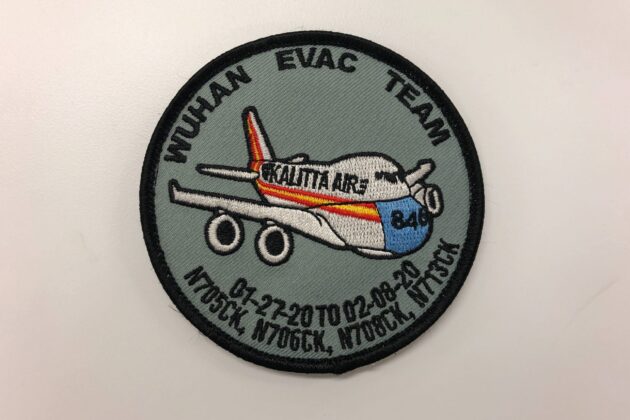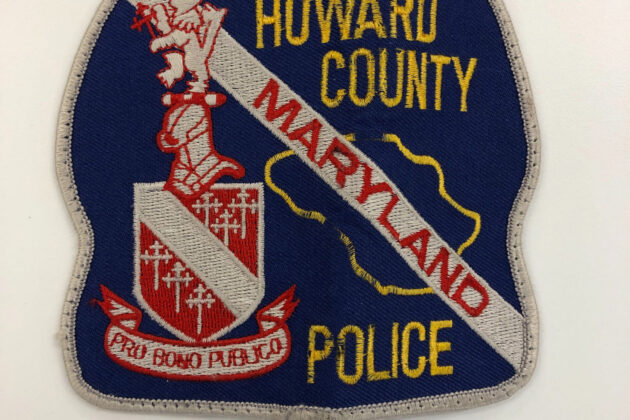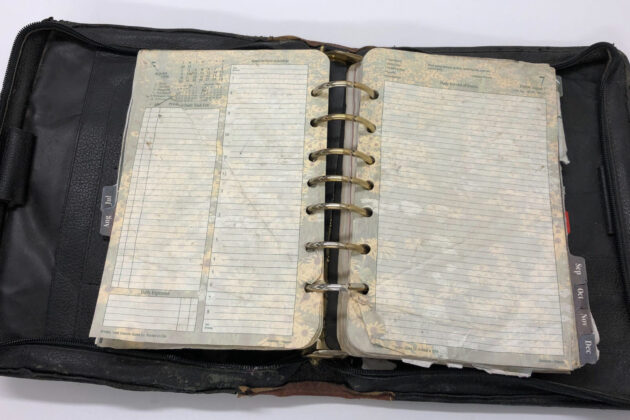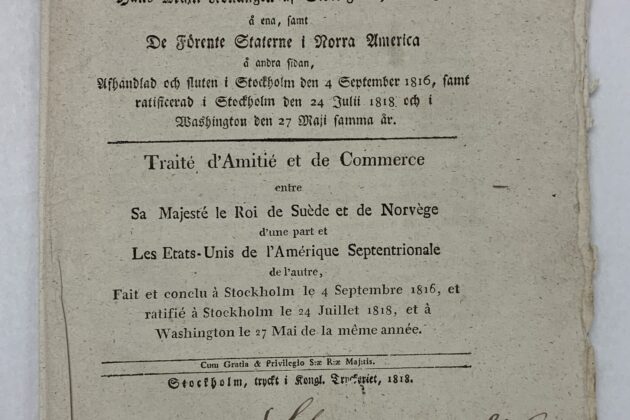
Our Favorite Acquisitions of 2020
For the National Museum of American Diplomacy, building our collection has always involved a focus on both the past and the present. Collecting has focused on not only documenting historical events and individuals, but also the work being done by diplomats today.
For 2020, as historic events shook the world, “collecting the present” took on special significance as the museum collected items and their stories.
Items from a global pandemic
In the midst of a global pandemic, the museum safely collected items representing the State Department’s frontline work bringing over 100,000 Americans home from overseas, as travel options disappeared in February and March. The Wuhan Evacuation Team Patch was created by one of the evacuation teams out of a shared sense of mission and camaraderie.
FROM THE COLLECTION
Wuhan Evacuation Team Patch
Another patch we collected was handed to the U.S. Ambassador in Cameroon, Peter Barlerin, by an evacuee while he was in the process of boarding the 1st evacuation flight from Cameroon. It was given as an impromptu token of thanks from a firefighter from Maryland for the embassy’s efforts to get him home.
FROM THE COLLECTION
Howard County, Maryland Police Patch
Other items collected from the repatriation efforts include examples of personal protective equipment (PPE) and ticket stubs from a family that was successfully evacuated.
Items from protests here and abroad
As protests calling for racial justice spread across the nation this summer, they also spread across the world. U.S. embassies and consulates became places for people from other countries to express support and solidarity with those protesting in the United States. American embassies have long been sites of protest, solidarity, and sympathy for the United States and its people.
This protest sign, expressing support for the Black Lives Matter movement, was used in a protest outside the U.S Embassy in Kingston, Jamaica. There, the U.S. Ambassador and members of his staff visited and engaged with the protestors, doing their duty to represent the United States and be a vital conduit for communication between nations.
FROM THE COLLECTION
Black Lives Matter Protest Sign
A day planner that survived the 1998 East Africa embassy bombings
This day planner belonged to Ellen Richard, one of the survivors of the August 1998 bombing of the U.S. Embassy in Nairobi. Richard lost her eyesight due to injuries from the bombing, and her personal story of courage and resilience— like that of so many others—is inspiring. Her day planner managed to survive the bombing despite the near-total interior destruction of the part of the embassy she was in; it was sitting on her desk at the time of the explosion.
FROM THE COLLECTION
Day Planner from Bombed Embassy
Items from Dr. Ralph Bunche
Dr. Ralph Bunche’s diplomatic career spanned from the mid-1940s to around 1970. Honored by the State Department as a “Hero of Diplomacy” in 2020, his many accomplishments include participating in the formation of the United Nations and brokering an armistice in the 1948 Arab-Israeli war, for which he was awarded a Nobel Peace prize in 1950. Dr. Bunche was the first African American to win such an honor.
FROM THE COLLECTION
Egyptian-Israeli General Armistice Agreement
This page of signatures is from one of the several armistice agreements signed after the official end of the war. Other items collected from Dr. Bunche’s career include an armband, pictured below, that he wore while observing peacekeeping missions during the early years of the United Nations.
FROM THE COLLECTION
Ralph Bunche's UN Armband
An early treaty from 1818
This document is a contemporary print from 1818 of an important early treaty between the United States and Sweden: the Treaty of Amity & Commerce. The original version was signed in 1783. This is a later, renewed version of the treaty completed in 1818.
FROM THE COLLECTION
Printing of 1818 Treaty with Sweden
A practice target from a trailblazer
Patti Morton was a trailblazer for women’s rights at the U.S. Department of State. She advocated for women to do any job without restriction. In the early 1970s, Morton became the first woman Diplomatic Security Special Agent. Throughout her career, she strived to make it easier for the women who would follow her. She became an inspiration to many, fighting for the fair and unbiased treatment of women in the diplomatic workforce.
This framed practice target speaks very clearly to her nickname, “Pistol Packin’ Patti,” and that she was renowned for her natural shooting ability. One of her other trailblazing roles was as a regional security officer in Saigon, South Vietnam in 1974 where she managed the Marines who guarded the embassy. The Marines welcomed her as one of their own and gave her a camouflage uniform so that she would fit in with them on the target shooting range. She was proud of the fact that she was judged proficient with the full range of weapons that the Marine guards were trained to use.
FROM THE COLLECTION
Patti Morton's Practice Target
Contribute to the museum
We are actively seeking items that represent American diplomacy and the work of the U.S. Department of State. These items can come from a variety of individuals and sources. Anyone currently or previously working in a diplomatic capacity might have objects that could be a good fit for our collection. If you have items you might be interested in donating, please email us for more information.







